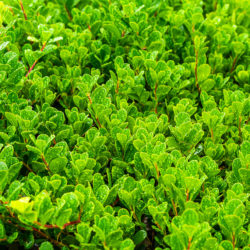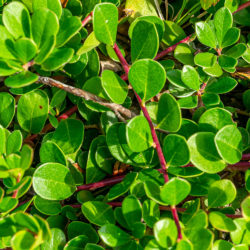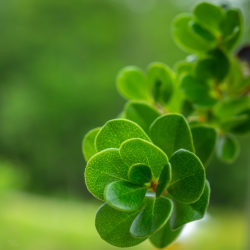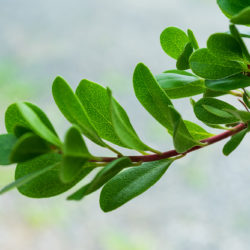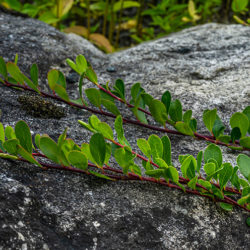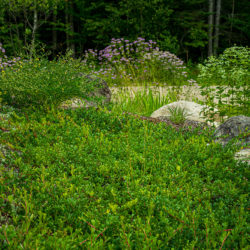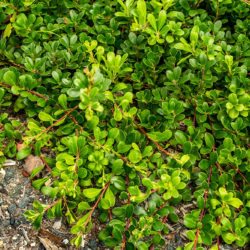Etymology
Arctostaphylos is Greek for bear (arctos) and grape cluster (staphyle); similarly, uva is Latin for grape and ursi is Latin for bear.
Native Habitat
Sandy, open, acidic, often pine-predominant areas throughout northern North America and Eurasia and in cool, alpine areas of the US southwest and Central America. A similar species, alpine bearberry, is found on New England mountains.
Garden Uses
Excellent ground cover for rocky, dry, sandy open areas and slopes, or front borders. Enjoys sun to part shade. Year-round visual interest. Also lovely under shrubs, growing over low stone walls, or in sunny borders. Trim out dead branches. Very few serious pests. Botrytis can be a problem if not sited correctly.
Overview
This hardy, trailing, evergreen shrub forms dense groundcover. It is tolerant of drought and erosion while intolerant to heat, wet soils, and high humidity. Height is typically under 12 inches, but spread can reach 15 feet. This plant is long-lived, but slow growing.
Leaves and Stems
Small, simple, glossy, leather-like evergreen leaves are paddle-shaped and alternate, with smooth edges that roll under. They are typically each under 1 inch in length, and change color throughout the year, from yellow-green in spring, to dark green in summer, and reddish-purple in autumn. Stems are trailing and flexible, with reddish, papery, exfoliating bark.
Flowers
Terminal clusters include small (1/3"), bell-shaped pink and white flowers.
Fruit/Seed
Bright red drupes follow flowers in autumn and stay well, often throughout winter. Each is 1/2" in diameter, and contains 5 nutlets.
Animal Associates
Bears and birds eat the berries. Flowers attract butterflies and hummingbirds. Leaves are a larval host to some butterflies, but no serious predation.
Propagation
Soft tip cuttings are easily rooted using root stimulant and sand. Seeds can be collected in autumn, outer flesh removed by macerating in water, and planted 3/4" deep; however, germination occurs the second year. Acid scarification may hasten germination. Very difficult to transplant, especially from the wild.
Ethnobotanical Uses
Numerous medicinal uses, including as a tobacco substitute, astringent, and diuretic. Drupes are technically edible by humans, but dry, tasteless, and mealy according to Meriwether Lewis.
Garden Location
Library Garden, Residential Garden (see garden map)
Sources
Lady Bird Johnson Wildflower Center
Plant Profile by Kate O’Dell

